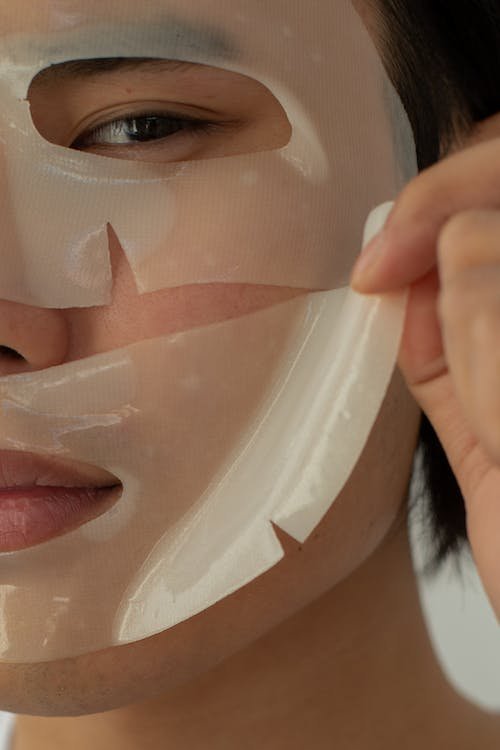Hair is an important part of anyone’s overall appearance. But with so many different types of hair, it can be hard to find the right products and routine to keep your locks looking healthy and fabulous. If you’ve ever been confused by all of the advice and opinions when it comes to haircare, you’re not alone. With the right regimen customized to your specific hair type, however, you’ll be able to enjoy beautiful, manageable locks with ease. In this article, we’ll discuss the best methods for creating a haircare routine tailored to you.
1. Creating Your Custom Haircare Regimen
Creating a custom haircare regimen catered to your unique hair needs is the ultimate must-have for a luxe luscious locks. Thankfully, it’s easier than you may think! Follow these steps below to begin your journey to healthier and more voluminous hair:
Figure Out Your Hair Type
- Take a look at the texture of your hair and check if it’s curly, straight, wavy, coiled, etc.
- Also take into consideration how much moisture your hair tends to have and how oily it can get.
Set Up a Haircare Schedule
- Depending on your hair type and how often you style it, decide how frequently you should be washing, conditioning and styling your hair.
- For best practices determine what type of products should be used on certain days of the week. For instance, wash your hair every other day and deep condition it every few weeks.
Start Experimenting With Haircare Products
- Research different products that target both your hair type and hair needs.
- Try out some samples in order to get a better feel for the type of products you would want to use most often.
Check In With Your Haircare Regime
- Give yourself a few weeks to see how your hair responds to the products you’re currently using.
- Don’t hesitate to mix it up with other formulas and ingredients as your hair’s needs and preferences may evolve over time.
2. Identifying Your Hair Type
figuring out your individual hair type is a great starting point for discovering the best care when achieving healthier, shinier locks. It’s easy to get stuck in a rut, using the same product day after day even though it might not be the perfect fit for your hair. Understanding your hair type can help you find the ingredients and systems that’ll give you the best possible end-result.
Oily Hair: Oily hair is characterised by its feel as much as its look – you’ll be able to tell it’s oilier than normal by the fact it feels unpleasantly greasy. It’s usually caused by genetics but can be provoked by humidity, excess heat or too much product.
- Use gentle soaps and run-off
- Limit products used
- Spray lightly with a hairspray
- Blot your hair with tissue paper
Dry Hair: Dry hair occurs when the sebaceous glands don’t produce enough oils to keep the scalp lubricated. It’s usually characterized by split ends, fly-away strands and it often feels brittle.
- Use a mild shampoo and conditioner
- Rinse with cold water to help seal in moisture
- Opt for deep conditioning treatments
- Don’t brush dry hair with a brush
3. Knowing Your Haircare Needs
When it comes to haircare, it is important to know your hair type, length, and goals. Knowing these details about your hair empowers you to make informed decisions when it comes to selecting the right shampoo, conditioner, and other products. It can also help you stay on top of your haircare needs.
The type of your hair can help you decide the type of haircare products you need, for instance, oily hair will require product that nourishes and hydrates without making hair more greasy, while dry hair may need richer, more moisturizing products. The length of your hair can influence the types of hairstyles you can achieve, so you may need to spend time researching the right products for your desired looks.
Knowing your goals is also important as part of your haircare routine. You may want to add volume to your hair, or you may need to repair split ends, or maybe you want to add definition or colour to your tresses. For this, you need to use specific products that are designed specifically for those goals. You can achieve whatever look you desire with the right haircare products.
In addition, you need to know how often to wash or condition your hair, when to have a trim and how often, as well as the type of hairstyle you should go for. Here are some quick tips on this:
- If you have fine or oily hair, opt for a shampoo and conditioner that detoxify and reduce oil.
- If you have colored hair, look for shampoos and conditioners specially designed for colored hair.
- Regularly wear a hat when outside for any extended period of time.
- Enjoy a hot oil treatment once a month for deep conditioning.
Once you know your haircare needs, you can move confidently ahead with the perfect haircare routine that suits you!
4. Crafting the Perfect Routine for Healthy Hair
Taking Care of Your Hair
Having healthy hair is about more than simply growing it out; it’s about creating the perfect routine that both nourishes and strengthens your locks. Our hair is our crowning glory, and taking the time to care for it can reap huge rewards. Here are 4 simple steps you can start incorporating into your hair-care regimen to get gorgeous tresses.
1. Find the Right Shampoo
Choosing a shampoo that works for your hair type is key. Whether your hair is dry and brittle, or oily and limp, there is a shampoo out there for you. Reading labels on products is essential to find the right one for your needs. Natural or organic formulas are also worth looking at for a more holistic approach.
2. Nourish from the Inside Out
Eating a balanced diet full of healthy fats, high in vitamins and minerals, will ensure that your hair has enough protein, biotin, and iron to stay strong and resilient. Make sure to incorporate foods like dark green leafy vegetables, eggs, salmon, whole grains, and nuts into your diet for maximum effect.
3. Protect Against Heat
We know the temptation of hair styling tools can be hard to resist, but try to limit the use of heated styling products as much as possible. Excessive heating can weaken the follicles resulting in breakage and split ends. When you do use a styling tool such as a blow dryer or curling iron, try to incorporate a thermal protection product to help guard against damage.
4. Get Regular Haircuts
No matter how healthy your routine is, a regular cut is essential to getting healthy hair. Going for trims every 6-8 weeks will ensure that the ends are healthy and can help to manage split ends as well as thinning hair. Your hairdresser can also recommend specific techniques and products that can help you reach your hair goals.
Your hair is a unique part of you so it’s important to understand its specific needs and create a haircare routine that will help nourish, protect, and beautify your locks. With the tips provided in this article, you can now create a customized regimen for your individual hair type that will have you looking your best in no time!




